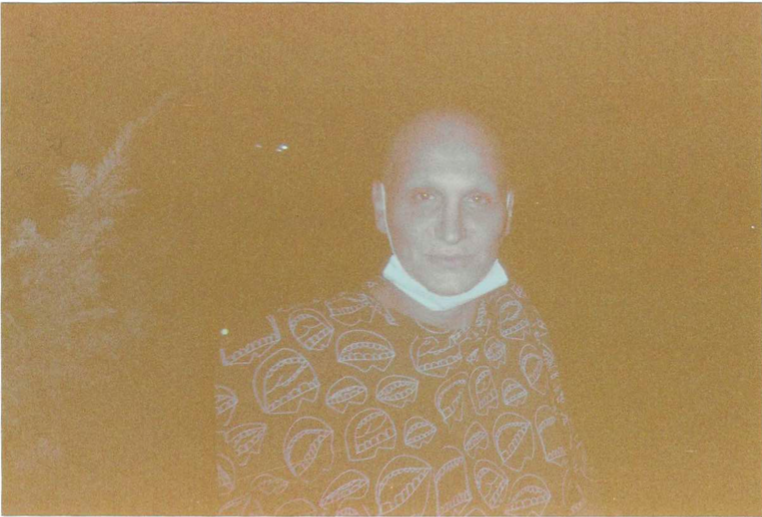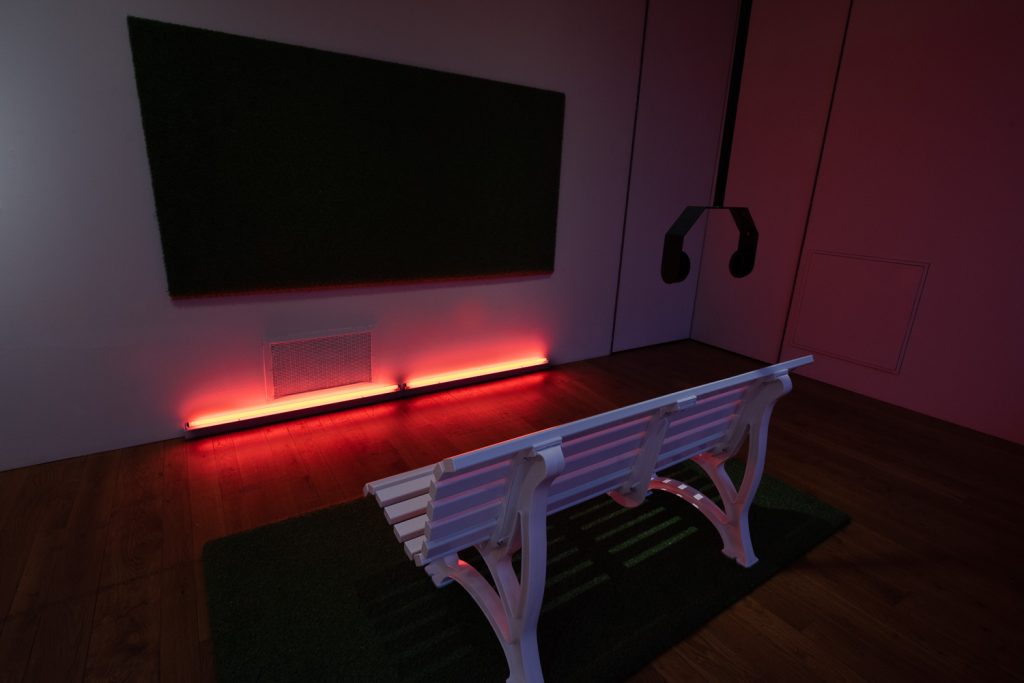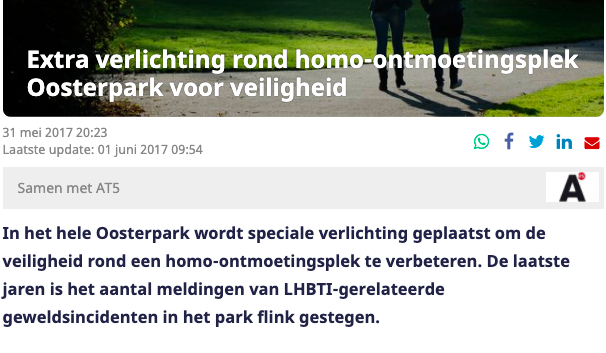*An Oral History*
Or: “the biggest dick I’ve ever seen”
Kübra Uzun and Simon(e) van Saarloos take a nightly walk around the park, nowadays surrounded by police. Uzun shares her teenage memories, cruising after school hours. Uzun’s stories are both nostalgic and full of present-day fire: gay and queer sex is still happening, resistance is still happening, people are still gathering. But the public toilets are monitored by cameras and the few standing trees are not enough to create dark spots—big lights illuminate all corners of the park.

Sexuality and urban intimacy have deep ties to activism and resistance. In order for a protest movement to grow, sex is often kept out of the narrative. Respectability politics take over. Sex and sex work require illegibility to survive and prevent policing. Safety is not provided by depending on the state or institutional powers; safety is mainly intramurally negotiated. Therefore, the way LGBTQI+ bodies inhabit and shape public space is easily forgotten. Most histories are not documented through text or legislation; they depend on intergenerational intimacies and informal storytelling.

In 2013 the visible presence of LGBTQI+ communities at the protests in Gezi Park, Istanbul, was internationally celebrated as a sign of emancipatory potential. The Turkish government’s proposal to build a shopping mall was not just a sign of capitalism and gentrification, it was also an attempt to erase gay expressions from the city centre, argues Emrah Yıldız in his text ‘Cruising Politics: Sexuality, Solidarity and Modularity after Gezi’ (2014). Gezi Park was locally known as an area where LGBTQI+ could meet, roam, and cruise. It made sense that LGBTQI+ communities were among the first to arrive, occupy, and protect this public space against commercial development.

Photo by Monique Vermeulen
For Refresh Amsterdam, Simon(e) van Saarloos presents Cruising Gezi Park, an installation that refers to both Gezi Park in Istanbul and Oosterpark in Amsterdam, examining concepts such as queer cruising, visibility, safety and the regulation of public space. Van Saarloos travels between the two cities, and invites Kübra Uzun, a DJ and activist who was involved in the 2013 protests in Gezi Park, to share her memories of a park that still feels a bit queer.
Instead of listening to Uzun’s story at length, visitors might pass by the work more quickly, briefly noticing a sound recording of a sunny afternoon in Oosterpark, Amsterdam. In 2017, Jan Majdanski was robbed and murdered while visiting a cruising spot in the city’s park. The police of Amsterdam responded by proposing extra lights at night. The lights were seen as a safety measure, but light is also often employed as a surveillance tool. Whose ideas of safety and pleasure rule the city?

Sound support by G. Qoutainy
Sticker & production support by Jessie Connell
Thanks to choreographer Alexis Blake for luring “Cruising Gezi Park” out of the museum, into the park
Supported by Amsterdam Museum, Amsterdam Fonds voor de Kunsten